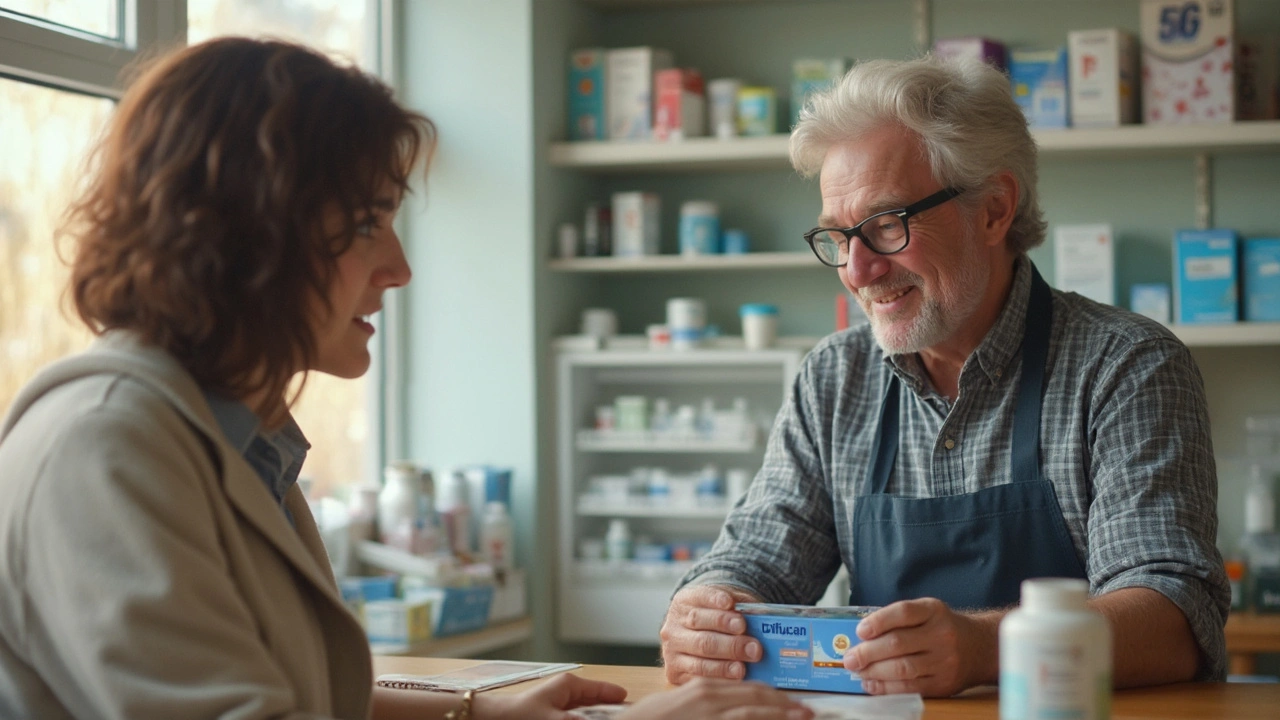Everything you wanted to know about Diflucan—what it is, how it works, when you need it, possible side effects, and tips from both doctors and everyday users. From science to practical tips, this article breaks it all down in a way you’ll actually understand and find useful.
Yeast Infection Treatment: What Works and What to Try First
Got the itching, burning, or unusual discharge? Yeast infections are common and usually easy to treat. This page gives clear steps you can try at home, when to use prescription meds, and when to check with a clinician.
Quick treatment options
For a typical vaginal yeast infection, over-the-counter antifungal creams and suppositories work well. Look for clotrimazole or miconazole; products come as 1-day, 3-day, or 7-day treatments. A single 150 mg dose of oral fluconazole (prescription) is another common option and often clears symptoms within a few days. Follow the product directions—shorter courses are fine for mild cases, longer or repeated courses may be needed for stubborn infections.
If you have oral thrush (white patches in the mouth), antifungal lozenges or prescription nystatin rinses are common. For skin yeast infections, topical antifungal creams for a week or two usually help.
When to see a doctor
See a healthcare provider if symptoms are severe, if you get four or more infections a year, or if symptoms don’t improve after treatment. Also get evaluated if you’re pregnant—oral fluconazole is usually avoided during pregnancy and doctors prefer topical options. If you have diabetes, HIV, or take medicines that suppress your immune system, infections can be more frequent or harder to treat, so talk to your clinician sooner.
Testing can confirm whether symptoms are from Candida (the usual yeast) or another condition like bacterial vaginosis or sexually transmitted infections. Tests can include a vaginal swab examined under a microscope or a lab culture when diagnosis is unclear.
Prevention tips matter. Avoid douching and scented hygiene products, wear breathable cotton underwear, and change out of wet swimwear or sweaty gym clothes quickly. High blood sugar and recent antibiotic use increase risk, so managing diabetes and discussing antibiotic choices with your doctor can lower recurrence.
Some people try probiotics or yogurt for prevention. Evidence is mixed but using a daily probiotic supplement or eating probiotic-rich foods may help some women reduce recurrence. Don’t replace proven antifungal treatment with unproven home remedies if symptoms are bad.
Always check interactions and safety if you take other medications. If you use blood thinners, hormonal birth control, or other long-term drugs, ask a clinician before taking oral antifungals. If symptoms return after treatment, ask for a follow-up—your doctor may prescribe a longer suppression plan or run tests to find the cause.
Bottom line: start with an OTC antifungal for straightforward cases, use prescription options if needed, and see a provider for frequent, severe, or unclear symptoms. Quick action and simple prevention habits cut down most yeast infection problems fast.

